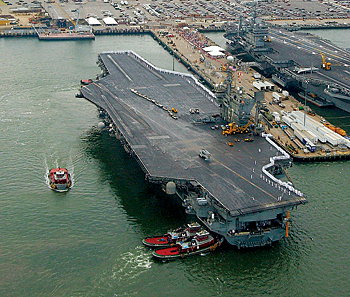INDIAN ARMED FORCES CHIEFS ON OUR RELENTLESS AND FOCUSED PUBLISHING EFFORTS

The insightful articles, inspiring narrations and analytical perspectives presented by the Editorial Team, establish an alluring connect with the reader. My compliments and best wishes to SP Guide Publications.

"Over the past 60 years, the growth of SP Guide Publications has mirrored the rising stature of Indian Navy. Its well-researched and informative magazines on Defence and Aerospace sector have served to shape an educated opinion of our military personnel, policy makers and the public alike. I wish SP's Publication team continued success, fair winds and following seas in all future endeavour!"

Since, its inception in 1964, SP Guide Publications has consistently demonstrated commitment to high-quality journalism in the aerospace and defence sectors, earning a well-deserved reputation as Asia's largest media house in this domain. I wish SP Guide Publications continued success in its pursuit of excellence.
- Indian Air Force Aims for Full Indigenous Inventory by 2047 — Air Chief Marshal A.P. Singh
- General Upendra Dwivedi takes over as the Chief of the Army Staff
- Rajnath Singh assumes charge as Defence Minister for the second consecutive term
- Admiral Dinesh K. Tripathi assumes Command of the Indian Navy as 26th Chief of the Naval Staff
- Prime Minister witnesses 'Bharat Shakti' – a Tri-Services Firing and Manoeuvre Exercise in Pokhran, Rajasthan
Norfolk Naval Station breach

The failures of a civilian police officer at the gate of Norfolk Naval Station allowed an intruder to enter the base without authorisation last March and fatally shoot a sailor aboard the destroyer Mahan as it sat pierside, a US Navy investigation has found.
The guard failed to ask the intruder for identification or his intent, did not immediately pursue him when he realised the driver was not making a U-turn, and did not sound an alarm to warn others on base, demonstrating a complete lapse of proper security procedure, said the Navy report. Those errors were key factors in the deadly shooting of Petty Officer 2nd Class Mark Mayo, the investigation found.
But the report also cites deeper systemic problems with security on the world’s largest naval base, including a lack of senior supervisors, manpower shortages, poor integration between the base and ship security, and broken equipment, including cameras, turnstiles and duress buttons.
The report, released one week shy of a year since the March 24, 2014, attack, makes a series of recommendations for correcting the problems. The Navy said it has implemented many of them and is continuing to put others in place.
“The investigation identified several deficiencies in the Naval Station security programme that left it vulnerable to this unacceptable security breach,” Admiral Bill Gortney, who recently completed his term as Fleet Forces Commander, wrote in his endorsement. “This tragic event demonstrates that we must dedicate even more effort, manpower and resources to strengthening our installation security.”
The incident began when Jeffrey Tyrone Savage, the civilian driver, pulled up to the gate at 11:30 p.m. in his tractor-trailer cab, according to the documents. The guard, failing to ask for identification, apparently thought Savage was making a U-turn. But after Savage continued onto the base, the report said, the guard failed to “deploy the hardened anti-access control system, failed to pursue Savage in a timely manner, failed to notify Naval Station Norfolk Security department dispatch and failed to execute any standard operating procedures required in response to an unauthorised individual on Naval Station Norfolk.”
Savage drove to Pier 1 and parked, then walked through the entry control point while a sentry opened the adjacent gate for Mayo, the guard in charge of the piers. The sentry saw Savage and called for him to stop, but Savage ignored her instructions, the report said.





